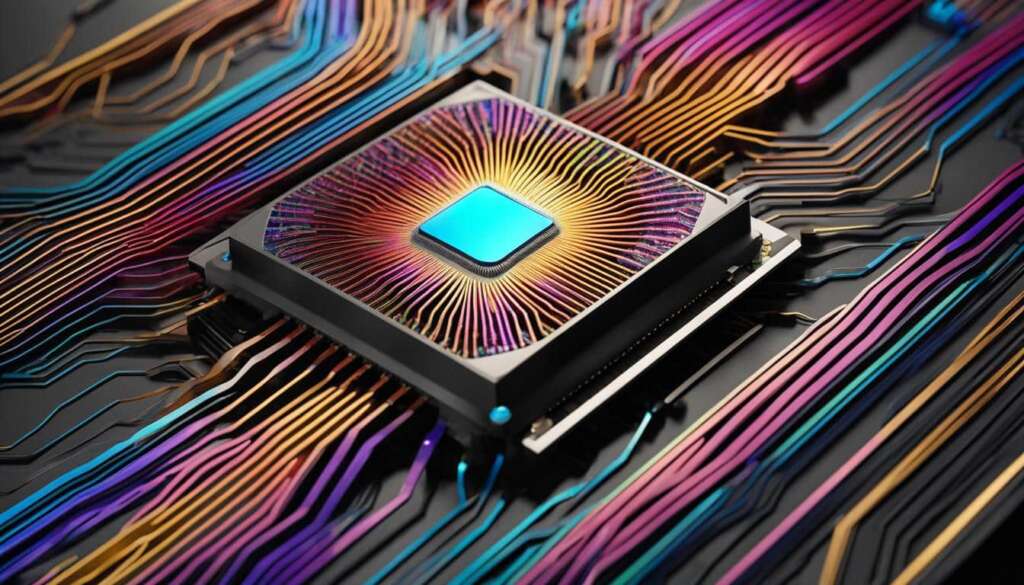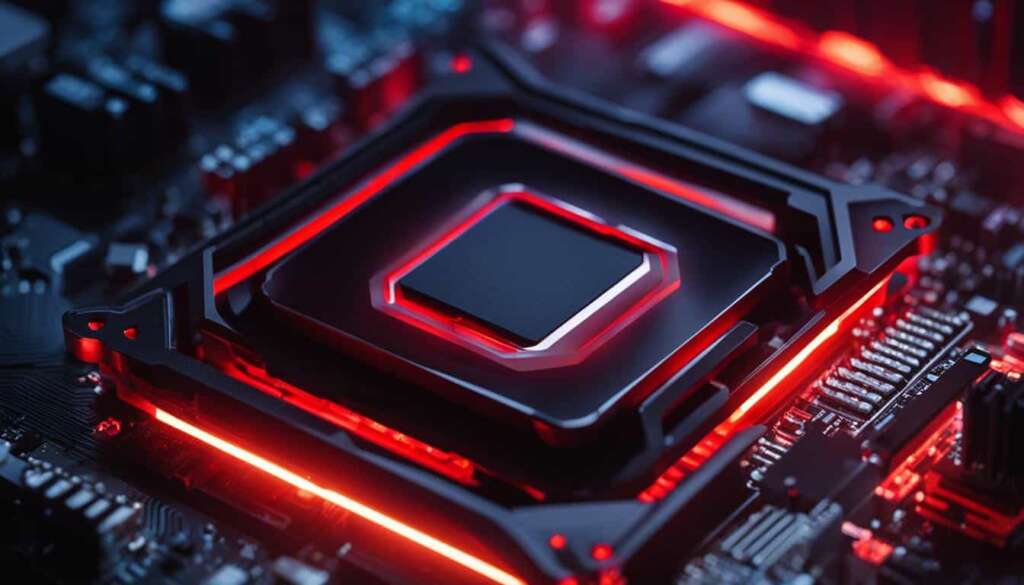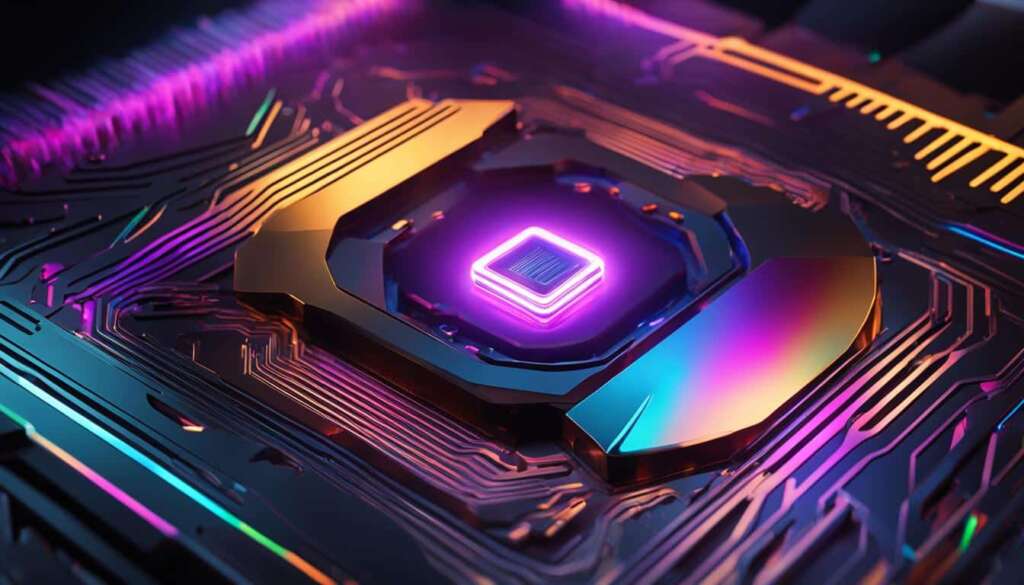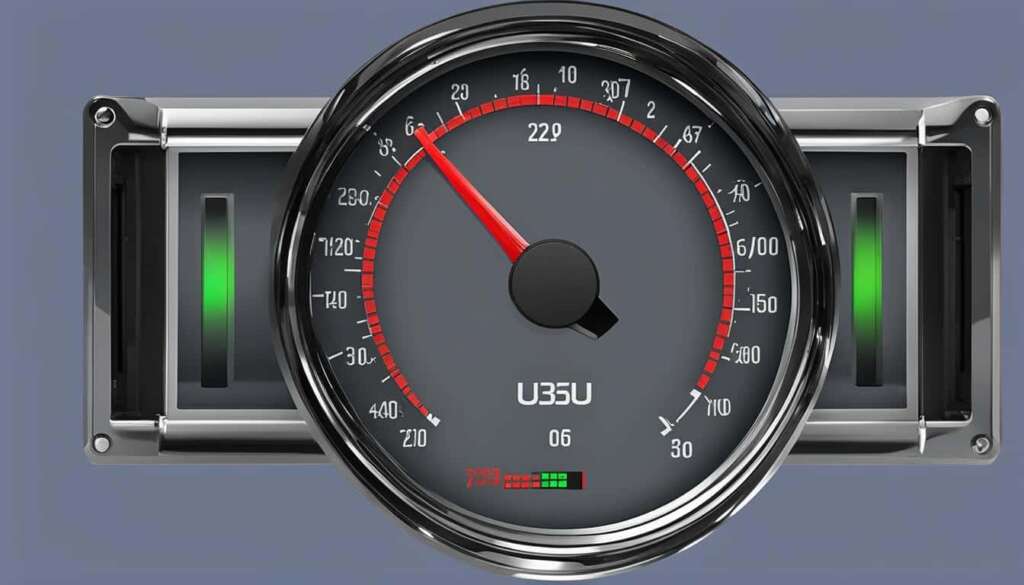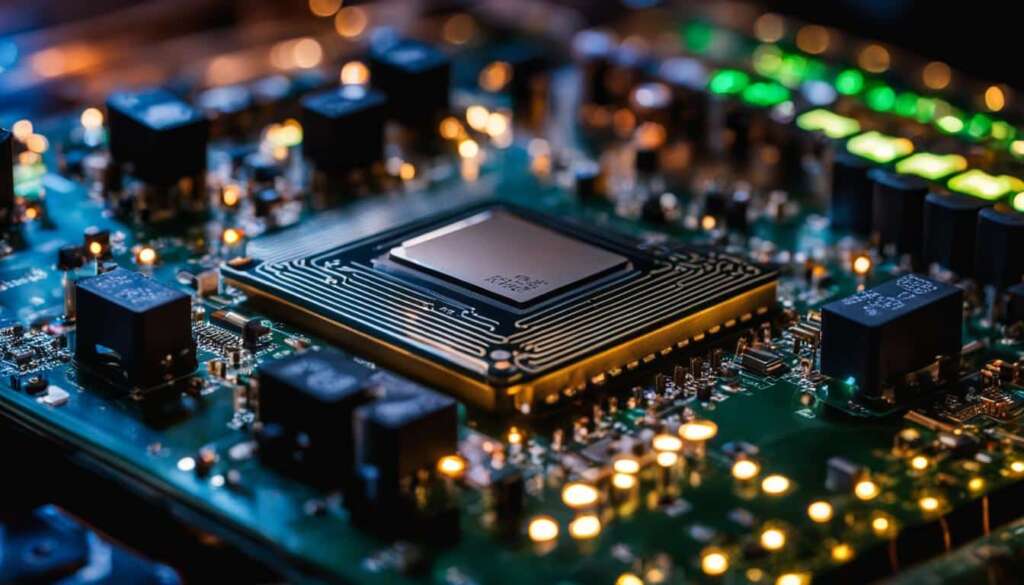Table of Contents
Overclocking your CPU can significantly enhance the performance of your PC, allowing you to run more intensive programs and achieve faster speeds. However, it is important to ensure that the process is done safely to avoid any potential damage to your hardware. In this article, we will provide a step-by-step guide on how to overclock your CPU while maintaining system safety and stability.
Key Takeaways
- Overclocking your CPU can boost PC performance by increasing clock speed.
- Understanding the benefits and risks of overclocking is essential before attempting the process.
- Performing temperature checks and stress tests is necessary to ensure system stability.
- Guidelines for overclocking differ for Intel and AMD CPUs.
- Maintaining proper cooling is key to prevent overheating and potential damage.
Understanding Overclocking and its Benefits
Overclocking is the process of increasing the clock speed of your CPU to achieve higher performance. By running the CPU at a higher frequency than its default settings, you can get more operations per second and improve overall system performance.
The main benefits of overclocking include faster rendering times, increased frame rates in games, and improved multitasking capabilities. When you overclock your CPU, tasks that require significant processing power, such as video editing or rendering complex 3D graphics, can be completed faster, allowing you to save time and be more productive. In gaming, overclocking can result in higher frame rates, delivering smoother gameplay and a more immersive experience. Additionally, overclocking can enhance multitasking performance, allowing you to run multiple resource-intensive applications simultaneously without noticeable slowdowns or lag.
However, it’s important to note that overclocking is not suitable for every computer. The compatibility of your hardware and the cooling capabilities of your system play a crucial role in determining whether overclocking is a viable option. Additionally, improper overclocking can lead to system instability, increased power consumption, and potential damage to your components. It’s essential to understand the risks and take necessary precautions before attempting to overclock your CPU.
Before delving into the overclocking process, it’s crucial to conduct thorough research, familiarize yourself with your specific CPU model, and ensure that you have adequate cooling solutions in place to dissipate the additional heat generated during overclocking. Furthermore, understanding the software tools available for monitoring and adjusting your CPU settings is essential for a successful overclocking experience.
By proceeding cautiously and following proper guidelines, you can harness the power of overclocking to unlock the full potential of your CPU, boosting performance and achieving improved results in various computing tasks.
Steps to Safely Overclock Your CPU
Before you begin the overclocking process, it is essential to check your CPU’s core temperature and ensure that it is not already overheating. You can measure the temperature using BIOS or third-party tools.
It is also recommended to perform a system stress test to ensure the stability of your current settings. Tools like Prime95 can help you stress test your CPU by putting a constant load on all CPU cores.
Checking CPU Temperature
To check your CPU’s temperature, you can use the BIOS settings or third-party tools like CPU-Z. These tools provide real-time monitoring of your CPU’s temperature and other vital statistics. It is important to ensure that your CPU remains within safe temperature limits during the overclocking process to prevent damage to the hardware.
Performing a System Stress Test
Before you start overclocking, it is crucial to stress test your system to ensure that it is stable and can handle the increased demands. A stress test pushes your CPU to its limits and helps identify any stability issues. One popular stress-testing tool is Prime95, which can be downloaded for free. Run Prime95 for an extended period and monitor your CPU’s temperature to ensure it does not exceed safe levels.

Stress-testing your system before overclocking is crucial to determine its stability under extreme conditions. It allows you to identify any potential issues and make adjustments to ensure a safe and stable overclock.
Once you have performed the necessary temperature checks and stress tests, you can proceed with the overclocking process confidently, knowing that you have taken the necessary precautions to ensure system safety.
Guidelines for Overclocking Intel and AMD CPUs
When it comes to overclocking CPUs, both Intel and AMD offer specific tools and guidelines to help you achieve optimal performance. In this section, we will focus on the guidelines for overclocking Intel and AMD CPUs, starting with Intel.
Overclocking Intel CPUs
Intel provides the Intel Extreme Tuning Utility (XTU), a comprehensive software suite designed specifically for Intel CPU overclocking. With XTU, you can easily modify CPU settings, monitor statistics, and stress-test your system to ensure stability.
To overclock your Intel CPU using XTU, follow these steps:
- Download and install the latest version of Intel XTU from the official Intel website.
- Launch XTU and familiarize yourself with the interface, including the various settings and statistics.
- Begin by adjusting the CPU multiplier, which directly affects the CPU clock speed. Increase the multiplier gradually and test stability after each adjustment using stress-testing tools provided by XTU or third-party software.
- Monitor temperatures and voltage levels while stress testing to ensure they remain within safe limits. If necessary, adjust voltage settings to maintain stability.
- Continue adjusting the CPU multiplier and voltage settings until you find the optimal overclock for your Intel CPU.
Overclocking AMD CPUs
For AMD CPUs, the process of overclocking is slightly different. AMD CPUs have unlocked multipliers by default, allowing for easier overclocking without the need for additional software.
To overclock your AMD CPU, follow these steps:
- Restart your computer and enter the BIOS settings by pressing the designated key during boot (often Del or F2).
- Navigate to the “Frequency/Voltage Control” or a similar menu in the BIOS.
- Find the CPU multiplier setting and increase it gradually.
- Save the changes and exit the BIOS.
- Restart your computer and monitor temperatures and stability while stress testing your system using tools like Prime95 or AIDA64.
- If your system remains stable, continue gradually increasing the CPU multiplier until you find the desired overclock.
Remember, not all CPUs are equal, and the effectiveness of overclocking may vary between models. It is essential to monitor temperatures and stability throughout the process to avoid damaging your CPU or other components.
Risks and Precautions of Overclocking
While overclocking can provide significant performance gains, it’s important to be aware of the risks involved and take necessary precautions. One of the main risks associated with overclocking is the increase in temperature and power consumption. When you overclock your CPU, it generates more heat, leading to higher CPU temperatures and potential instability. It’s crucial to ensure that your computer’s cooling system is capable of effectively handling the increased heat generated by overclocking.
Overheating is a major concern when it comes to overclocking. Excessive heat can damage your CPU and other components, reducing their lifespan and potentially leading to system failure. To mitigate this risk, here are some precautions you should take:
- Invest in a high-quality CPU cooler or liquid cooling system to help dissipate heat effectively.
- Ensure proper airflow within your PC case by organizing cables and positioning fans strategically.
- Regularly clean your computer’s cooling system, including fans and heatsinks, to prevent dust accumulation that can impede heat dissipation.
- Monitor the temperature of your CPU using software utilities or BIOS settings to keep an eye on any potential overheating.
Aside from the risk of overheating, there are a few other precautions to consider before overclocking:
- Read and follow the manufacturer’s guidelines for your specific CPU model to ensure you are within safe limits.
- Start with conservative overclocking settings and gradually increase them, testing for stability and monitoring the temperature along the way.
- Be aware that overclocking may void your CPU’s warranty, so proceed with caution and at your own risk.
- Backup important data and files before overclocking, as there is a slight possibility of system instability or crashes that could lead to data loss.
By understanding the risks and taking necessary precautions, you can safely overclock your CPU and enjoy the performance benefits it brings.
| Risks of Overclocking | Precautions for Overclocking |
|---|---|
| Increased temperature | Invest in a high-quality CPU cooler or liquid cooling system |
| Higher power consumption | Ensure proper airflow within your PC case |
| Potential instability | Regularly clean your computer’s cooling system |
| Damaged CPU and components | Monitor the temperature of your CPU |
| Voided CPU warranty | Follow manufacturer’s guidelines and start with conservative settings |
| Data loss | Backup important data and files before overclocking |
Conclusion
Overclocking your CPU can be a game-changer when it comes to boosting your PC’s performance. By unlocking additional speed and power, you can experience faster rendering times, improved multitasking capabilities, and increased frame rates in games. However, it is crucial to approach overclocking with caution and follow the necessary safety precautions.
Monitoring your CPU’s temperature is essential during the overclocking process. By keeping a close eye on the temperature, you can prevent overheating and ensure the longevity of your hardware. Stress-testing your system is another crucial step to verify stability and identify any potential issues.
Remember, overclocking should be done gradually and with patience. Making small adjustments to CPU settings and monitoring the impact on stability and temperature is crucial for a safe and successful overclock. Prioritizing system safety and cooling is vital to avoid any potential damage or performance issues.
In conclusion, with the right approach and careful attention to safety precautions, overclocking your CPU can significantly enhance your PC’s performance. Just remember to always prioritize system stability, monitor temperatures, stress-test your system, and make adjustments gradually. By following these guidelines, you can safely overclock your CPU and enjoy the benefits of improved performance.
FAQ
What is overclocking?
Overclocking is the process of increasing the clock speed of your CPU to achieve higher performance.
What are the benefits of overclocking?
The main benefits of overclocking include faster rendering times, increased frame rates in games, and improved multitasking capabilities.
How can I check the temperature of my CPU?
You can measure the temperature using BIOS or third-party tools.
How can I stress test my CPU?
Tools like Prime95 can help you stress test your CPU by putting a constant load on all CPU cores.
How can I overclock Intel CPUs?
You can use the Intel Extreme Tuning Utility (XTU), a software suite specifically designed for Intel CPU overclocking.
What are the risks of overclocking?
The main risk is the increase in temperature and power consumption, which can lead to higher CPU temperatures and potential instability.
How can I ensure system stability and safety while overclocking?
By monitoring temperatures, stress-testing the system, and gradually adjusting settings, you can safely achieve a stable overclock and enjoy improved performance.

